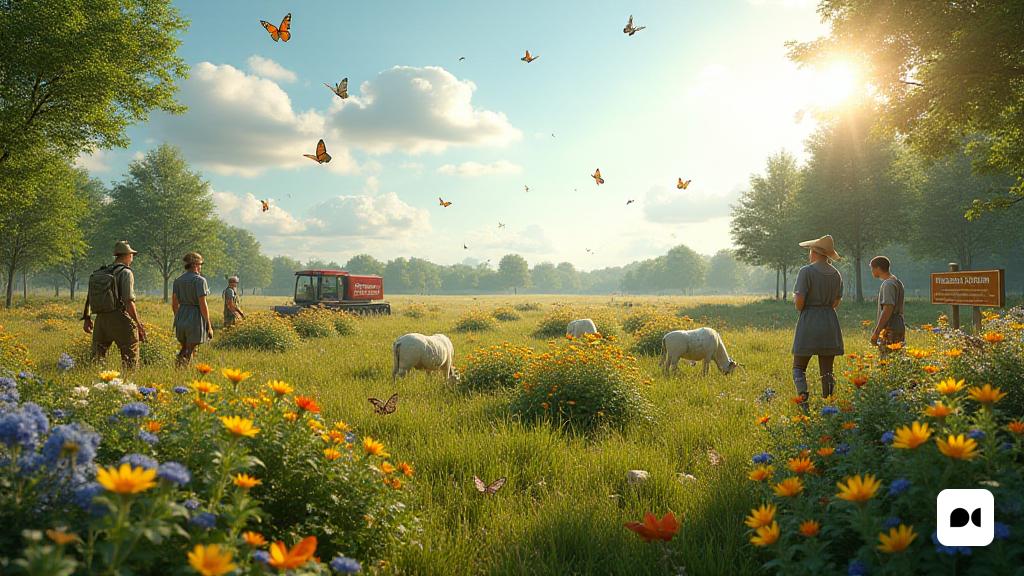A New Dawn for Butterfly Conservation in the Midlands
In a remarkable effort to revive dwindling butterfly populations, over 60 hectares of new habitats have been established across the Midlands, marking a significant stride towards conservation. Spearheaded by the dedicated team at Butterfly Conservation, this four-year initiative has transformed nature reserves spanning Worcestershire, Shropshire, Staffordshire, Warwickshire, and Nottinghamshire.
Community Engagement: The Heart of the Project
At the core of this project lies a passionate community of volunteers who have generously contributed their time and effort through the Butterfly Mosaics initiative, financially supported by Severn Trent Water. Their hard work has revitalized grasslands, creating a sanctuary for various butterfly species.
Innovative Habitat Creation Techniques
In Shropshire, for instance, brambles were systematically removed to pave the way for plants that cater to caterpillars, while goats were introduced to help manage the newly cleared areas. This unique approach not only enhances the environment for butterflies but also promotes biodiversity.
Protecting Endangered Species: A Focus on the Silver-studded Blue
The Prees Heath Common nature reserve stands out as a crucial refuge for the Silver-studded Blue butterfly, a species that has seen its numbers plummet by 44% since the 1980s. This area is pivotal in maintaining genetic diversity and ensuring the survival of this rare butterfly.
Collaborative Efforts Yield Promising Results
The success of this project has been bolstered by partnerships with various organizations, including the Forestry Commission, local wildlife trusts, and private landowners. Rhona Goddard, the Midlands conservation manager, highlighted the importance of these collaborations, noting that trees have been planted specifically for butterfly breeding, and stones have been laid out to provide sunning spots.
Confronting Challenges in Butterfly Populations
Goddard expressed concern about the previous year, which was recorded as one of the worst for both common and rare butterfly populations across the UK. The ongoing destruction of habitats remains a critical issue, yet she views this community-driven initiative as a beacon of hope for the future.
Specific Initiatives Across the Midlands
In Worcestershire, enhancements were made at Grafton Wood nature reserve, utilizing advanced technology like robotic mowers to create favorable conditions for the Wood White butterfly, which has experienced an 82% decline since the 1970s. Meanwhile, Nottinghamshire’s Grizzled Skipper found new habitats created through innovative methods involving bags of rocks.
Expanding Habitats for Future Generations
In Warwickshire, community members expanded woodland areas for the Wood White at Hay Wood and planted disease-resistant elm trees in various sites. In Staffordshire, efforts to clear bracken at Cannock Chase Country Park have resulted in new habitats for the Small Pearl-bordered Fritillary, another butterfly that has seen a 66% decline.
Call to Action: Respecting Nature’s Sensitive Sites
While the Butterfly Conservation charity encourages visits to these reserves, they remind the public to approach these sensitive areas with respect and care. The conservation of these habitats is a shared responsibility, and every visitor plays a role in ensuring their protection.
The ongoing commitment to butterfly conservation in the Midlands exemplifies how community action, innovative practices, and strong partnerships can forge a path towards a more biodiverse future.

